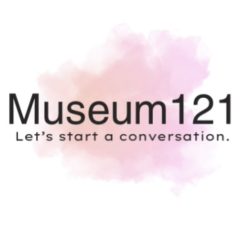
On Saturday, April 13th, 2024 you are invited to join Maryann at The Cleveland Museum of Art to celebrate Slow Art Day from 11am-2pm!
Join this international movement happening in museums from Arizona to Australia and Sweden to South Africa on Saturday, April 13th. If you are not planning a trip to Reykjavik or Rome next weekend to participate in one of 150+ Slow Art Day events happening around the globe, then join me at the only Slow Art Day event scheduled in the state of Ohio!
We’ll start the conversation at 11am to LOOK at 5 different artworks
We’ll continue the conversation from 1-2pm, LUNCH at Provenance Café
$25/participant (does not include lunch. does include gifts!)
maximum: 8 participants
payment: cash (on day of event) or Venmo
contact maryann@studio121wellness.com
What is Slow Art?
Slow Art encourages viewers to focus on slow looking at works of art and its transformative power, prompting viewers to consider what other areas of their life might benefit from intentionally slowing down.
Slow movements have arisen across industries in response to the unrealistic demands of our modern consumer-driven culture. The Slow Art Movement encourages the deliberate creation and consumption of art. Similar to movements in fashion and food, the Slow Art movement exists to remind us that every piece of art in the world, be it painting or sculpture or tapestry, was necessarily created with raw materials through a process that is, in itself, valuable. In that way, art is more than the final product. Art is the process of creation and the final product; it is the parts and the subsequent sum of those parts. And, the only true way to experience the gravitas of a finished piece is to fully immerse yourself in it.
What is Slow Art Day?
The main goal of Slow Art Day is to help the viewer contemplate art and take in the sensory experience as a meditative event. The intention is to aid the visitor in paying attention to the artwork itself, as opposed to the experience where one mainly considers background information, such as the museum painting labels and wall texts.
Research has shown that the average museum-goer spends less than 30 seconds looking at any given work of art. In sitting with the artwork for an extended period of time, the observer is able to trade their formerly fleeting, consumptive experience for a sensory, meditative experience.
The History of Slow Art Day
Phil Terry conceived the idea of Slow Art Day in 2008. The thought occurred to him after he spent hours at the Jewish Museum in New York primarily enjoying two abstract paintings — Jackson Pollock’s Convergence and Hans Hoffman’s Fantasia. A year later, he launched the first official Slow Art Day event in collaboration with 16 museums. The event consisted of several things — first, visitors would sign up to observe five artworks with a volunteer host, spending 10 minutes viewing each piece. The second part included a lunch, where the visitors and the hosts alike discussed the experience over a shared meal. Since 2009, over 700 venues including museums, galleries, artist studios, and public art sites have participated in what has become an annual event.
“Visitors often see art from their phones. Slow art is an antidote to that. By slowing down, it helps us see art in a new way that energizes rather than demoralizes.” – Phil Terry
How will Studio121 Wellness celebrate Slow Art Day?
We will follow the basic guidelines of Slow Art Day +++
We will LOOK at 5 works of art (20 minutes each) to start the conversation :
+ deep breathing exercises
+ Visual Thinking Conversations
+ creative writing experiences
We will LUNCH together after the tour to continue the conversation :
+ within as a personal, reflective activity, considering how to slow down our own lives
+ with us as a discussion, on how to share this transformative experience
+ with others applying the slow process locally, at home + work and in the global community
Reservations will be taken on a 1st come basis, EMAIL Maryann today!
For more information on Slow Art, check out the RESOURCES on our slow art page









